Invertebrate Systematics – Continuing to move forward
Gonzalo GiribetInvertebrate Systematics 31(1) i-iii https://doi.org/10.1071/ISv31n1_ED
Published: 16 March 2017
It has been eight years since Professor Andy Austin wrote the last Editorial, as Editor-in-Chief of Invertebrate Systematics, which he titled ‘Past and Future’. Under his guidance, our beloved journal has grown stronger and stronger and has stabilised with an impact factor above 2.1 for the first time for two consecutive years – our articles are cited more every year. This is the result of the hard work of the strongest editorial board, with experts across taxonomic and methodological disciplines, and their fast response to the many editorial duties. We have continued with past goals of internationalisation, but maintaining a certain Australasian flavour; diversification, but raising standards of the work accepted in the journal; and increasing visibility with a brand new website launched in 2016 and using digital media to promote our issues and articles through CSIRO Publishing. Our growing number of special issues (virtual and physical), either taxonomically or methodologically oriented, have contributed to the reputation of Invertebrate Systematics. A virtual issue with some landmark papers from the 30 years of the journal appeared in early 2017.
Publishing physical journals has challenges in the era of fast information and we are moving towards online-early publication, while trying to address issues of validity and priority of taxon names. The journal is also receiving more papers than ever before in part because of the increased quality and impact factor and the demands from some evaluating agencies to publish in top quartile journals. These are all good news, of course, that continue to help to increase the quality of our published articles. We have therefore seen an increase of submission and pre-submission inquiries for long solid papers focusing on the taxonomy of particular groups with beautiful species descriptions, redescriptions and keys that unfortunately would take an entire (or a large fraction) printed issue of the journal. We regret to be unable to accept these articles as they would ultimately reduce the number of published papers per year, increase time to publication considerably and will end up, in the mid-to-long term, impacting the quality of work submitted to our journal. We are therefore requesting authors to place more relatively superfluous materials as online supplementary material as we do have the page constraints not existing in many online journals. We are also asking our authors to focus on relevant evolutionary and methodological questions that can be extracted from their data to make systematic papers as general as possible yet without imposing a hard space limit and without asking them to remove taxon-oriented information, something very hard to find in other journals on evolutionary biology.
We think that the future is bright as the journal continues to offer an excellent vehicle to publish highly competitive scientific research. To provide an example, a decade ago, few authors interested in impact factors and publication quality and speed would trade a paper in a zoological journal for one in a molecular journal. Invertebrate Systematics now competes with many of the big molecular journals publishing phylogenetic research, but adds two components we believe are essential for the success of a journal: an outstanding team of editors not overloaded with papers to handle and an even better publishing team handling submissions, copy editing and proofing in house. Our CSIRO team led by Publisher Jenny Foster, Production Editors Melissa Storey (2002–2017) and Maryline Chee Kimling (2017–present), and their superb staff provides what few other journals can, a direct connection between the authors and the processing of their articles at all stages – and you know how important that is when dealing with journals that outsource their production and proofs to large publishers that know little about zoology or taxonomy. We take all these challenges and look at a future where we can print the highest-quality articles with the best publication experience while catching up with new technologies and public media and ever-decreasing times from submission to publication. Our eight editors, two of whom (Professors Prashant Sharma and Lars Krogmann) recently joined the editorial team and are specially welcomed here, are introduced below. Finally, our deepest gratitude goes to Professor Andy Austin for having contributed to make this journal what it is and for his stewardship as Editor-in-Chief from 2008 until 2015, continuing as Associate Editor until the end of 2016.
Professor Gonzalo Giribet
Editor-in-Chief, Invertebrate Systematics
Invertebrate Systematics – Editorial Board
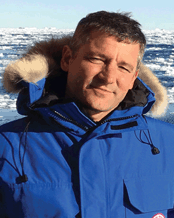
|
Gonzalo Giribet is Editor-in-Chief of Invertebrate Systematics. He received his Ph.D. in arthropod phylogenetics by the Universitat de Barcelona (1997) and then conducted postdoctoral research at the American Museum of Natural History, in New York. In 2000, he joined the Department of Organismic and Evolutionary Biology at Harvard University first as Assistant Professor, became Associate Professor in 2004 and then Professor in 2007. He is now the Alexander Agassiz Professor of Zoology in the Museum of Comparative Zoology. He is also a Fellow of the California Academy of Sciences, a Research Associate at the American Museum of Natural History (New York) and at the Field Museum of Natural History (Chicago), and an Affiliate at the Broad Institute of Harvard and MIT. Dr Giribet’s research interests center around understanding invertebrate evolution and biogeography, with special foci on reconstructing the Tree of Life, and on the diversification of Gondwanan faunas.
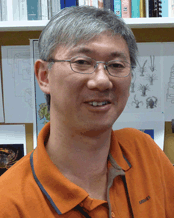
|
Shane Ahyong (Associate Editor) received his Ph.D. from the University of New South Wales in 2000 and was a postdoctoral fellow at the Australian Museum, Sydney, prior to joining the National Institute of Water & Atmospheric Research, New Zealand, in 2006, managing the Marine Biodiversity & Biosecurity Group and Marine Invasives Taxonomic Service (MITS). He returned to Australia in 2010 and is a Principal Research Scientist and Manager of the Department of Marine Invertebrates at the Australian Museum, and an Adjunct Professor at the University of New South Wales. Dr Ahyong’s research revolves around the phylogenetics, systematics and biogeography of aquatic invertebrates, primarily marine and freshwater crustaceans worldwide, in addition to marine invasive species. Dr Ahyong is immediate Past President of The Crustacean Society.
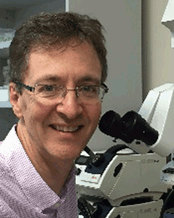
|
Mark Harvey (Associate Editor) received his Ph.D. from Monash University in 1983. He then undertook Postdoctoral Fellowships at CSIRO’s Division of Entomology in Canberra and the Museum of Victoria in Melbourne before obtaining the position of Curator of Arachnids at the Western Australian Museum, Perth in 1989. He is currently Head of the Department of Terrestrial Zoology. His research interests are focused on the evolution, systematics, taxonomy and conservation of terrestrial invertebrates, particularly arachnids. He is particularly interested in species discovery and has undertaken field trips in many different parts of the world. In 1993, he was the recipient of the Edgeworth David Medal from the Royal Society of New South Wales, and in 2013 he received the Bonnet Award from the International Society of Arachnology.
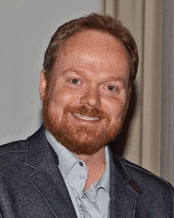
|
Lars Krogmann (Associate Editor) received his Ph.D. in Entomology from the University of Hamburg (2005) and held a postdoctoral position as Humboldt Fellow at the University of Adelaide and the South Australian Museum. In 2008, he joined the Natural History Museum in Stuttgart as researcher and curator and is currently heading the Hymenoptera section. In his research, he primarily studies parasitoid wasps to understand general patterns of insect evolution and host–parasitoid interactions. Dr Krogmann’s broad research interests cover integrative phylogenetics and taxonomy, fossil history, functional morphology and biodiversity assessments.

|
Rudolph Meier (Associate Editor) is a graduate from the Freie Universität Berlin (Biology Diplom), Tulane University (M.Sc.), and Cornell University (Ph.D., Entomology). He was a postdoctoral fellow at the American Museum of Natural History before joining the Zoological Museum of Copenhagen University in 1997. In 2002, Dr Meier moved to the National University of Singapore where he is currently a faculty member in the Department of Biological Sciences and Deputy Head of the Lee Kong Chian Natural History Museum. Dr Meier’s research focuses on Diptera and in particular the morphology, biology, genetics, and development of black scavenger flies (Sepsidae). He is also using Singapore’s habitats as test systems for developing tools that allow for large-scale species discovery, documentation, and monitoring with NGS data and digital photography.
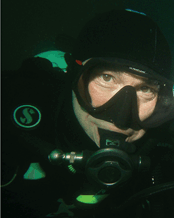
|
Greg Rouse (Associate Editor) obtained his B.Sc. and M.Sc. from the University of Queensland and Ph.D. from the University of Sydney. He is currently a professor of marine biology in the Marine Biology Research Division at Scripps Institution of Oceanography at UC San Diego and is also curator of the Benthic Invertebrate Collection at Scripps. He specialises in the study of animal biodiversity, particularly the extraordinary bone-devouring worm Osedax and new hydrothermal vent animals. He has been involved in the discovery and naming of more than 100 species of animals and has published two books and more than 180 scientific papers. Prior to joining Scripps, he held research positions at the South Australian Museum, the University of Adelaide, and University of Sydney, and as a research fellow at the Smithsonian Institution in Washington, D.C.
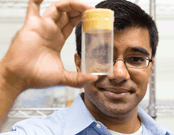
|
Prashant Sharma (Associate Editor) received an A.B. and Ph.D. from Harvard University’s Department of Organismic and Evolutionary Biology. He subsequently completed an NSF postdoctoral research fellowship at the American Museum of Natural History. Thereafter, he joined the faculty of the University of Wisconsin-Madison. His research comprises phylogenetics, molecular evolution, and evolutionary developmental biology, with emphasis on chelicerate arthropods.

|
Nerida Wilson (Associate Editor) completed a B.Sc. from University of Melbourne (1998), followed by a B.Sc.(Hons) and Ph.D. in Marine Biology at University of Queensland (1999, 2004). She was then briefly a Visiting Research Fellow (University of Adelaide) and a Research Associate (South Australian Museum) through 2004–2005 before commencing a postdoctoral position at Auburn University, Alabama (2005–2006). She then moved to another postdoctoral position at Scripps Institution of Oceanography, California (2007–2010) before becoming a Project Scientist there. She then returned to Australia, first at the Australian Museum (2010–2013) and now the Western Australian Museum (2014 to present) as a Senior Research Scientist. Her research interests focus on the biodiversity and phylogeny of marine invertebrates.


